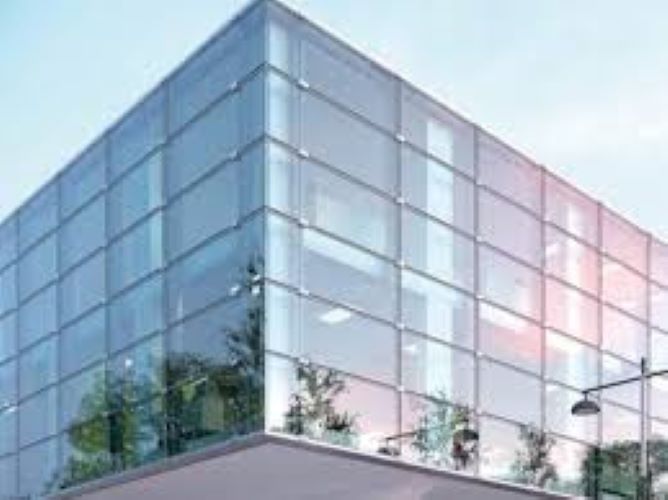Dinesh Chandra
Persistent noise pollution can present serious problems for both residential and commercial spaces in the busy settings of modern cities. The constant cacophony of traffic, emergency sirens, and the general bustle of city life can all hurt one’s comfort, productivity, and general well-being. There has never been a higher need for efficient soundproofing solutions as cities grow and become denser in population. Façade glazing is one such idea that has attracted a lot of interest.
Façade glazing is the term for the external covering of a building’s structure, usually made of glass that serves as a decorative element in addition to a protective barrier. Being aesthetically pleasing, contemporary façade systems are also made to fulfill several practical needs, including light transmission, thermal insulation, and, more and more, acoustic performance. In urban settings, façade glass plays an especially important role in soundproofing buildings since structures are frequently subjected to high levels of outside noise. Architects and builders can create a more comfortable and quiet interior by using glass systems and materials that are appropriate for the structure and reducing the amount of outside noise that enters the building.
Acoustic Principles of Façade Glazing
The two main components that influence the acoustic performance of glazing are sound absorption and sound insulation. The ability of the glazing to prevent or lessen sound from entering the building from the outside is referred to as sound insulation. Conversely, sound absorption refers to the glazing’s capacity to take in sound waves and stop them from bouncing inside the rooms.
1. Sound Insulation: A façade glazing system’s Sound Transmission Class (STC) rating indicates how well it insulates against sound. The better the glazing system’s ability to suppress sound, the higher its STC rating. Conventional single-pane windows often have poor STC ratings, which indicates that a substantial quantity of outside noise can enter the structure. Modern double- or triple-glazing systems, on the other hand, can reach significantly higher STC ratings, which effectively lower noise levels, especially if they use laminated glass.
2. Sound Absorption: Sound absorption manages interior noise, whereas sound insulation stops outside noise from entering the building. By absorbing sound energy, specific acoustic glazing materials can be employed in façade systems to lessen echo and reverberation within the room. This is especially crucial in big interior spaces like atriums and open-plan workplaces where managing noise levels is crucial for comfort and efficiency.
Types of Acoustic Glazing
Different types of acoustic glazing, each having varying degrees of noise attenuation, can be utilized to improve soundproofing in urban environments:
1. Laminated Glass: Usually composed of polyvinyl butyral (PVB), laminated glass is composed of two or more layers of glass joined together by an interlayer. This interlayer not only increases safety by keeping the glass from breaking, but it also greatly enhances the acoustic qualities of the glass. By attenuating sound vibrations, the PVB interlayer lessens the propagation of noise.
2. Double Glazing: This technique uses two glass panes spaced apart by an airtight spacer or an inert gas such as argon. Sound waves are less likely to pass through because of the buffering effect of the air space between the panes. One pane can be laminated for better acoustic performance, or the gap can be widened for even better sound absorption.
3. Triple Glazing: By including a third pane of glass, triple glazing expands on the idea of double glazing. This extra layer can offer even more sound insulation when paired with several air gaps, which makes it a wonderful option for buildings in very noisy urban settings.
The Impact on Urban Living
The quality of life for building occupants in urban areas can be significantly enhanced by the installation of high-performance façade glazing systems. Better acoustic glazing in homes can produce a calm and quiet atmosphere that is necessary for rest and sleep. Effective soundproofing can boost output, lower stress levels, and raise customer and staff happiness in commercial facilities like hotels and offices. Furthermore, acoustic glazing is essential for establishing the right atmosphere in healthcare and educational facilities, where a calm setting is critical for healing and focus.
As cities expand and noise pollution becomes a constant problem, façade glazing plays a bigger and bigger part in improving acoustic performance. Architects and builders may design buildings that not only satisfy energy efficiency and aesthetic criteria but also offer a haven from outside noise by grasping the fundamentals of sound absorption and insulation and choosing the right glazing systems. Thus, façade glazing is more than just a matter of taste in design—rather, it is an essential component of the continuous endeavor to raise the standard of urban living.
Dinesh Chandra is Founder, Shankar Fenestration Glasses
